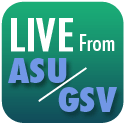Teachers Give Today’s Digital Tools Mixed Grades, National Survey Shows
Scottsdale, Ariz.
The nation’s teachers are being expected to use classroom technology in myriad ways, but educators believe only about half of the digital devices their students use are effective, a new survey finds.
The results of the survey were released Tuesday in a report, “Teachers Know Best: What Educators Want from Digital Instructional Tools,” which was commissioned by the Bill & Melinda Gates Foundation. 
The report, based on a nationwide, nationally representative survey of 3,100 teachers, was unveiled at the ASU/GSV Education Innovation Summit being held here, an event that has evolved into a major gathering of ed-tech companies, entrepreneurs, and investors.
But in some respects, the message delivered through the survey from the nation’s teachers to producers of digital content is a somber one—that the companies churning out materials need to do a lot better.
The survey asked teachers to identify the types of digital resources they use in the classroom, a query which produced a list of 964 “student-facing” digital products, meaning those designed to help with student learning. Asked to list the top five products they ask their students to use frequently, teachers named 53 percent of the more than 900 total tools that made the list.
Some of those technology-based products are focused on a single academic subject, like math or English/language arts, while others cover multiple content areas. In addition, many of the products are content-agnostic platforms or hardware, meant to host or aggregate content or work across a range of subjects.
But according to the survey, even the products that teachers use a lot are deemed to be of middling quality. Just 54 percent of teachers said they regard the digital products their students use frequently to be effective, the survey found.
Among the report’s other findings:
- Teachers don’t often get to choose the products they use, but when they do, probably not surprisingly, they’re more likely to report those tools are effective;
- Teachers find out about technology products mainly through word of mouth from other educators and administrators, and by other means, such as through social media and meetings with colleagues;
- Finding products that align with the Common Core State Standards and Next-Generation Science Standards is the attribute sought most often by teachers in choosing digital resources (The Gates foundation has been a major backer of the common core);
- Yet teachers also say that major gaps exist in the digital resources devoted to helping prepare them for common-core standards. The four subject areas and grades where teachers deem the digital materials to be the weakest are elementary-level English/language arts; high school math; middle school social studies, and all grade levels in science.
In math, educators are less likely to see the digital resources as being available, and of high quality, as grade levels increase. The opposite is true in English/language arts, where elementary-level tech digital products are deemed the weakest.
“In our work with schools over the last few years, we have heard a common theme,” the report states. “Teachers are trying hard to challenge and engage their students, but they don’t have sufficient choices for effective digital instructional tools that truly meet their needs.”
Meanwhile, product developers have often been left to guess about what K-12 officials want, the authors say, echoing a common sentiment voiced at ASU/GSV.
“This absence of useful market information has led to a mismatch between the kinds of digital instructional tools that teachers say they actually need,” the report adds, “and the kinds of products companies are creating and school districts are buying.”
[UPDATE: Stacey Childress, deputy director of education for the Gates foundation, told Education Week at the ASU/GSV gathering that she hopes the survey research will give developers of education products, particularly those who can’t afford to do a lot of their own market research, insight about educators’ needs, and their frustrations.
Childress also said the survey should reinforce an understanding about how the K-12 market functions. She pointed to survey results showing that teachers report that only 4 percent of the tech-based products they buy are purchased with their own money. That means that even if companies want to market directly to teachers, they have to recognize the limitations: Educators have little money to spend on relatively expensive tech tools—and little autonomy to spend district funds on those resources.
Teachers also may be reluctant to spend money on digital classroom materials if they believe they lack the knowledge to evaluate the usefulness of those resources, she said.
“Teachers really want great content,” Childress said during a panel discussion about the report’s findings. “But the market [needs] to do a better job in helping them get access to these tools.”]
